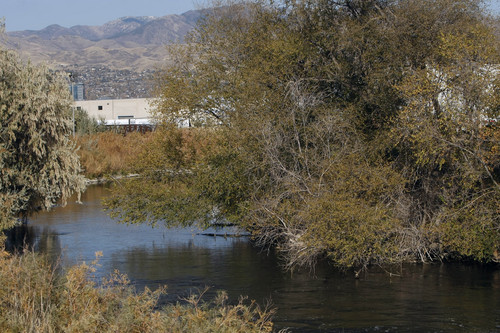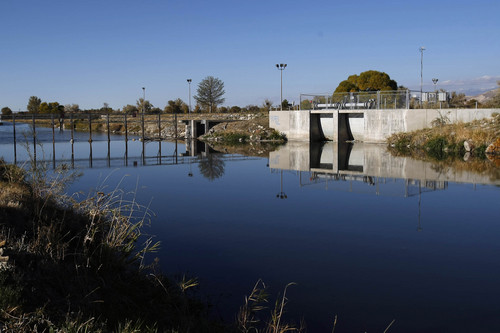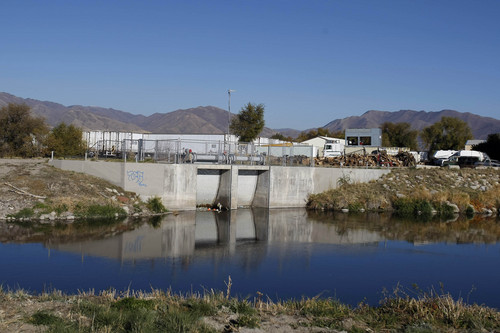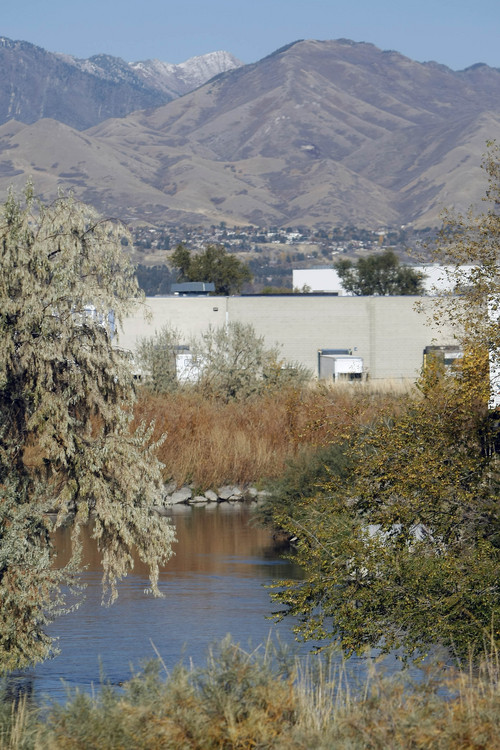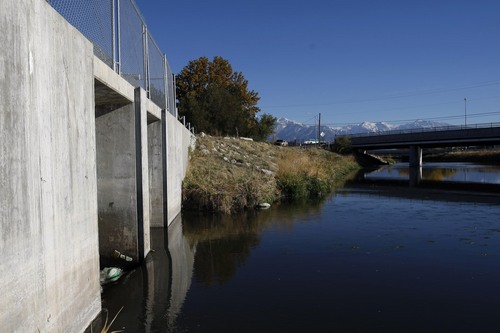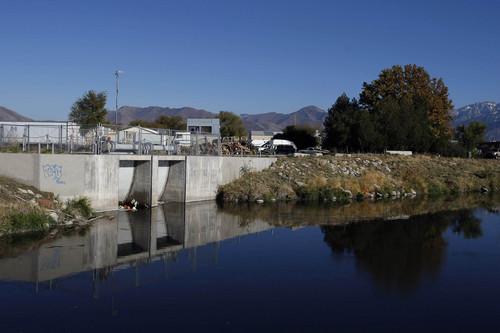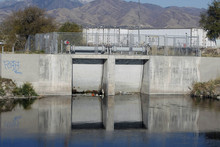This is an archived article that was published on sltrib.com in 2013, and information in the article may be outdated. It is provided only for personal research purposes and may not be reprinted.
There is no imminent threat of danger, but the levees that flank the Jordan River Surplus Canal's 12-mile run to the Great Salt Lake have flunked an inspection by the U.S. Army Corps of Engineers.
So Salt Lake County has begun fixing some of the dozens of problem spots along the century-old canal, eager to be eligible for Corps' assistance if the waterway is damaged by future flooding.
The canal wouldn't qualify for that help now, not with the Corps formally notifying Salt Lake County public works officials in September that the channel's maintenance rating was "unacceptable."
But the county has committed to fix Corps-identified deficiencies — total value unidentified — and has applied for a waiver that would keep it eligible for Corps aid if that next big flood strikes before current repairs are finished.
Mayor Ben McAdams' proposed 2014 budget asks for $600,000 to accelerate work along the canal, which flows through residential and commercial neighborhoods after branching off from the Jordan River near 2100 South. It then runs by Salt Lake City International Airport and Wingpointe Golf Course before emptying into lake marshlands.
"We take very seriously our responsibility to maintain and properly operate flood-control facilities that provide protection to Salt Lake County property owners," said county public works director Russ Wall, noting that crews already have fixed 55 problems.
The Corps revamped its levee safety program in 2006 and, in 2009, received funding from the American Reinvestment and Recovery Act to conduct more detailed levee inspections every five years.
Inspectors arrived in Salt Lake in May 2012. Their examinations of both shorelines found places where poles and fences had intruded into the levee. Weedy bushes, grasses and trees invaded its flanks, leading to erosion. Burrowing rodents made things worse.
Along the golf course, it was hard to tell in places where regular rough ended and levee began, said Ryan Larson, acting levee safety program manager in the Corps' Sacramento office, which oversees Utah.
"Levees perform as a system," he said. "It's a chain … and the chain is only as strong as its weakest link. If there's a deficiency, the whole levee could be affected ."
Scott Baird, director of the county's division of engineering and flood control, said many low spots along the levee and eroded banks were products of the high-water years of 2010 and 2011. While the canal took a beating, he noted, it did not allow floodwaters to spill into surrounding neighborhoods.
"We see this as a good opportunity to make a lot of repairs for things that happened those two years," Baird said. "We're going down the list one item at a time and addressing them on an individual basis."
Anticipating this development, the county hired a consultant in 2012 to study canal flows and deficiencies. A new consulting contract will be granted soon to fix problems cited by the Corps, he added.
The most difficult issues are likely to involve drainage pipes that flow into the surplus canal from the airport and the city's storm drain system.
Baird declined to identify a bottom-line cost for repairs because so many discussions remain with airport and city public-utility officials about what they jointly need to do.
Twitter: @sltribmikeg —
Levee inspections
The Army Corps of Engineers also gave an unacceptable rating to the levee around South Davis Sewer District's north plant in West Bountiful. It is a lesser concern. The sewage treatment plant is on high ground now. It would take several years for a rising Great Salt Lake to threaten it.
No ratings have been assigned to Redmond Channel in Sevier County and Big Wash Levee in Beaver County. A decision is expected later this year or early in 2014, following analysis of September inspections, said Corps levee safety program manager Ryan Larson.


